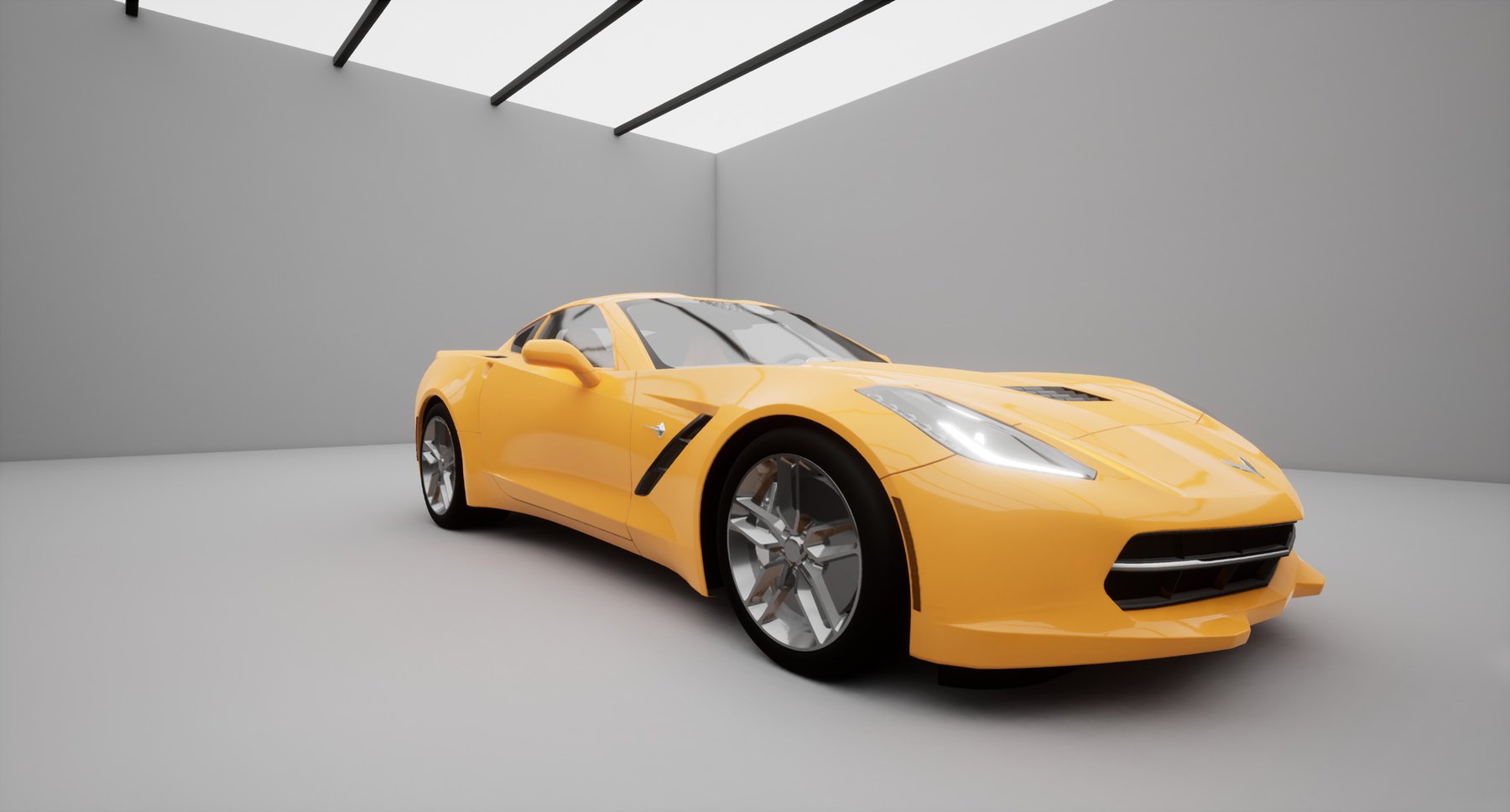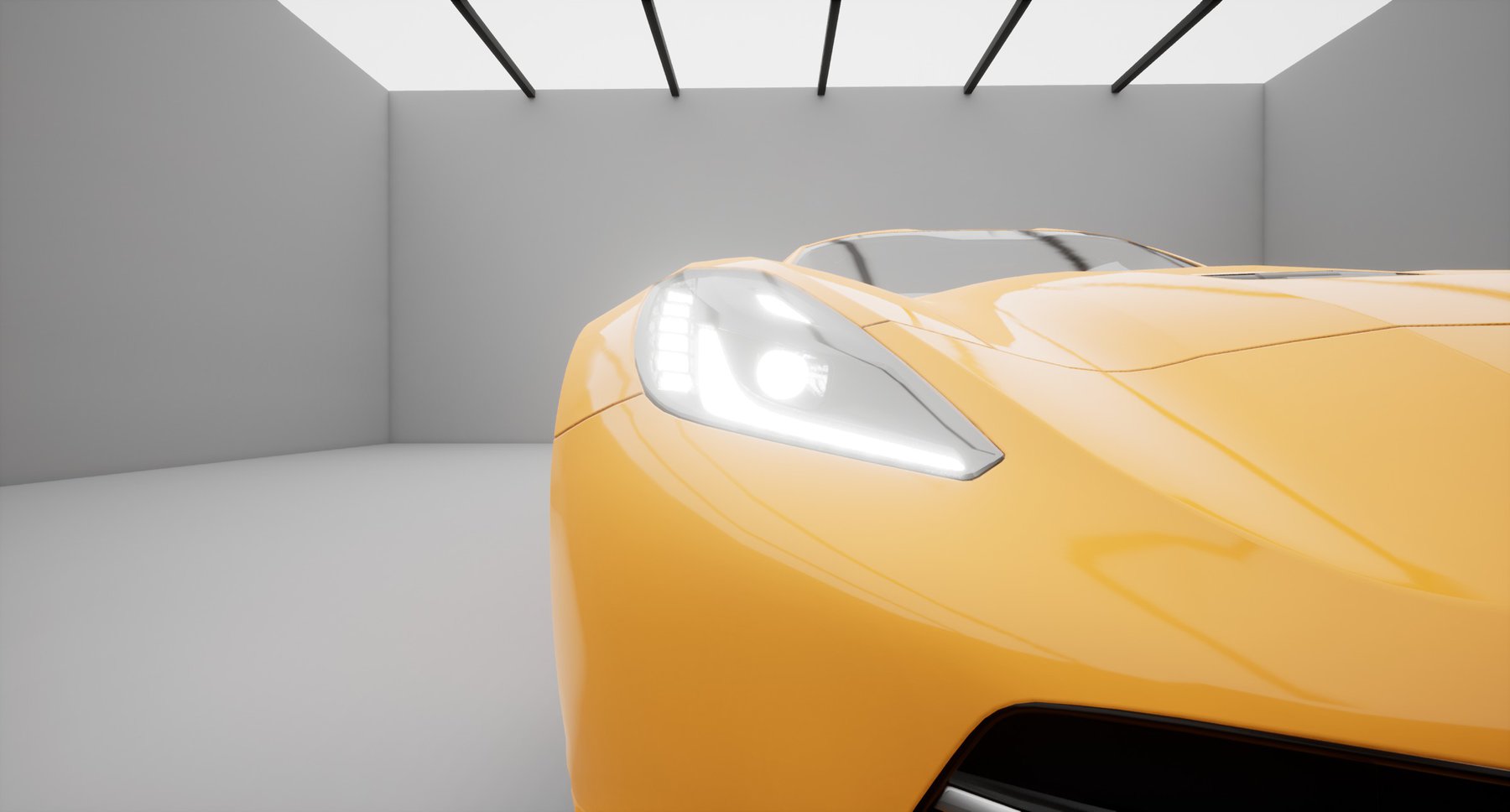| Year | 2021 |
| Credits | Thomas RicciardielloProject Developer Ben SimonsTechnical Direction |
| Links | |
| 3D Stereo | Yes |
| Tags | breakaway car explode view interactive model unreal engine visualisation |
Car Showroom Demo
This project was one of the first Unreal Engine demos we built as we were climbing the learning curve. Our team didn’t set out to specifically visualise a car model, but we did want to explore the process of importing and working with a large model with a lot of detail.
The Chevrolet Corvette above is a community creation that we imported as an FBX file, and used to become familiar with Unreal Engine’s static mesh and material assets system. We initially ran into issues translating the intended materials to our project, so most of these were re-created with the intention of allowing the user to select a colour at runtime.
This project became a more helpful exercise in learning to use Unreal Engine’s lighting model. We wanted to achieve the effect of a lighting soft box, which creates smooth, diffused shadows. To do this, we actually removed all traditional lighting actors (e.g Directional Lights) and built lighting based on a single Skylight actor which captured the white light bounce from an Exponential Height Fog actor, which is a relatively cheap way to create a flat coloured environment. By substantially increasing the default light map resolution of the mesh assets in the level and building static lighting at the highest quality (production), we’ve achieved quite a great image.






Interaction
This demo has a few modes of interaction, largely just as simple experiments. Using a 3Dconnexion Space Mouse (6-axis joystick style controller), users can fly through the scene and explore any angle of the model. By holding a button on the Space Mouse, it’s analog axis no longer operate the game camera, but instead allow the user to change the colour of the car’s body paint by pushing up/down to change brightness, forwards/backwards to change saturation, and twisting to set a hue value. A secondary button toggles the car’s front and rear lights, just for fun.
Breakaway / “exploded” view
The exploded view technique is a common visualisation method for representing the extent of automotive and mechanical designs. By pulling each part away from a central location, the invisible become visible, and the complexity of these models can be seen. To experiment with this, we added a secondary level to this project. Using the same controls to shift paint colour, a twist instead separates the individual static mesh assets of the model, using a pre-calculated vector from the origin of the model at the ground level. Users can set the degree of the “explosion” and explore the assets of the model. Of course, these parts are simply the pieces of the digital model, not an actual Corvette, but the precedent was created.